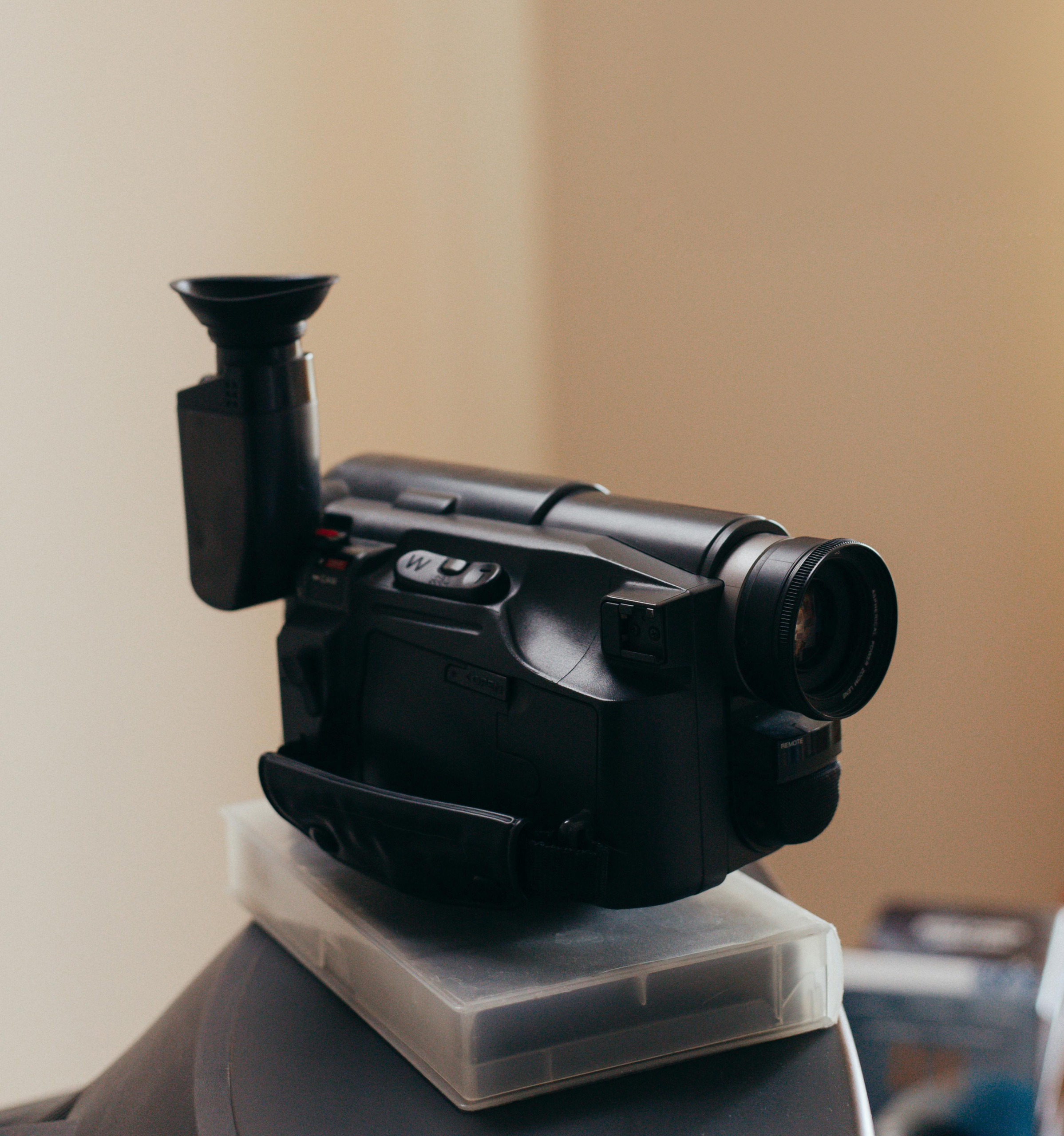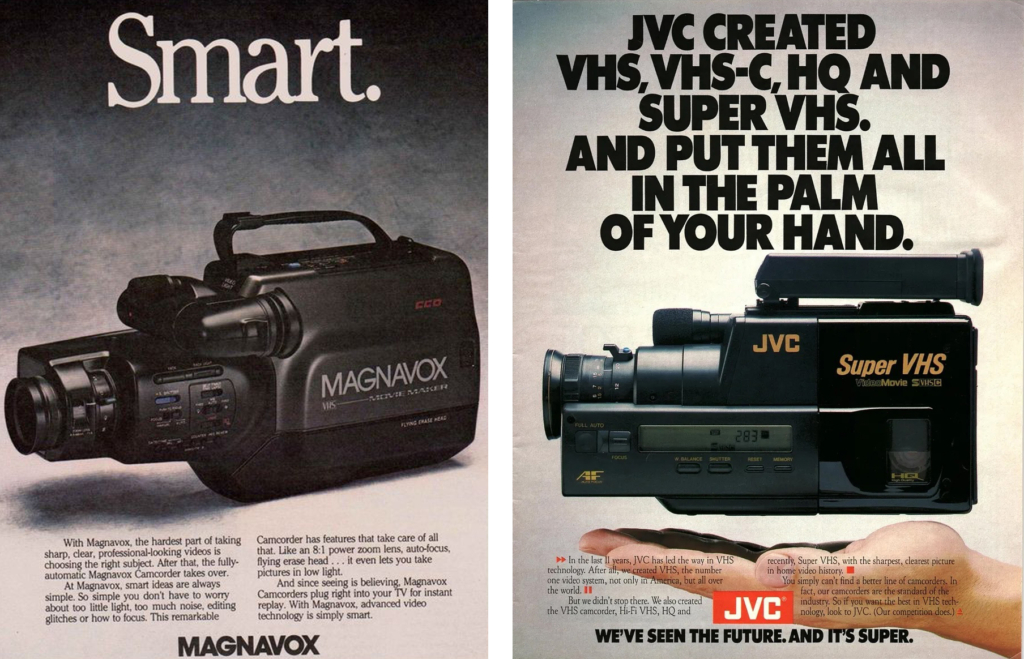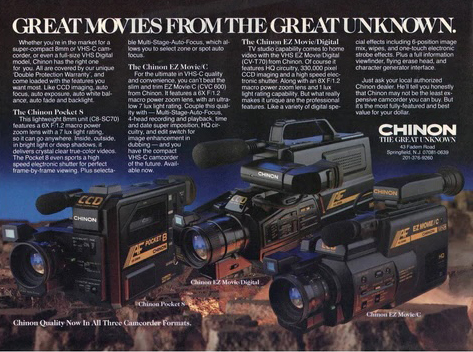From their early days with Betacam to their relevance in the digital age, camcorders have truly cemented their place in technology history. Here’s everything you need to know about camcorders, and more importantly, how to keep your precious recorded memories safe.
What is a camcorder?

Essentially, a camcorder combines a video camera, recorder, and player all in one unit. Before the introduction of the camcorder, recording and playback devices were separate — the rise in popularity of camcorders made it easy for everyone, not just professionals, to record their own videos.
Camcorders work similarly to still image cameras. The lens captures visual information, which is then processed by the image sensor to convert it into an electronic signal, while the microphone records accompanying audio. These signals are stored on a built-in storage device or external media, such as tapes, DVDs, or memory cards.
A brief history of the camcorder
Camcorders changed the way we capture content. The invention of the first camcorder is credited to Jerome Lemelson, who successfully patented the camcorder in 1980. However, it was Sony that brought the concept to life by releasing the first commercially available camcorder — the Betacam, in 1982.
Before the advent of the camcorder, cameras were primarily used for recording and required a separate connection to a VHS recorder. The introduction of the Betacam changed this, allowing users to both record and playback using a single, integrated device.
In the same year, JVC built on the success of Sony’s Betacam with the release of VHS-C, a smaller version of VHS tapes, further expanding the possibilities of portable video recording.
Initially embraced by news studios, the camcorder allowed for the recording and in-studio editing of footage, marking a significant leap in efficiency for the media industry. In 1983, the technology was made available to the public, signalling a new era of personal video recording.
In 1983, the 8mm format was introduced with the Video 8, the first chip-based camcorder, hitting the market in 1985. This format offered a more compact and convenient solution for consumers, contributing to the widespread adoption of camcorders in various settings.

Throughout the late 1980s and early 1990s, intense competition among manufacturers led to continuous improvements in camcorder technology. A huge change came in the 1990s with the rise of digital camcorders, which offered superior video quality and convenience. Then, in the following decade, camcorders faced obsolescence as smartphones and other smart devices emerged, equipped with advanced cameras that made dedicated camcorders almost redundant.
However, just like vinyl records and Polaroid photos, camcorders do hold a special nostalgic quality that appeals to many consumers, keeping the industry afloat still to this day. While it may no longer be a household staple, the legacy of the original camcorders lives on.

Camcorders vs. Video Cameras
The terms “camcorder” and “video camera” are often used interchangeably, but there are subtle distinctions between the two, primarily related to their design, features, and usage.
The main difference is in their function. A camcorder is a compact, all-in-one device that combines a video camera, microphone, and recording unit in a single device designed to be portable. On the other hand, a video camera is a broader term that refers to a device specifically designed for capturing video footage. It may not necessarily have integrated recording capabilities, requiring an external playback device, and doesn’t have to be compact and easy to carry.
Also, the term “video camera” is more generic and covers all recording devices, from professional-grade equipment to the kind of video recorder you’d see in a family home. Meanwhile, camcorders are primarily intended for casual or consumer use and often come with user-friendly features and automatic settings. So yes, while the terms video camera and camcorder are sometimes used interchangeably, technically there are differences between the two.
How to preserve your treasured VHS tapes
Preserving old VHS tapes from camcorders is essential to retain precious memories captured on analog media. Even if you have a VHS player — which is increasingly rare these days! — it’s important to take extra care to ensure you’re storing and handling your tapes in a way that won’t damage them.
Store the original VHS tapes in a cool, dry place away from direct sunlight. Avoid exposing them to extreme temperatures or humidity. Consider placing them in protective cases to prevent dust and damage.
The most effective way to preserve VHS tapes is to digitize the content. It is possible to do this at home or you can use a VHS-to-digital converting service to transfer the analog footage to a digital format like MP4. This allows you to store the content on modern storage devices and makes it easier to share or edit. Once you have your digital files, it’s a good idea to create multiple copies of them and store them on different storage devices, such as external hard drives or cloud storage, just in case they’re lost or damaged. Label the digital files with relevant information such as dates, events, and locations, then organize the files into folders to make it easier to locate specific content in the future.

Digitize your old camcorder movies with EverPresent
While you can buy your own VHS converter, you may feel safer leaving it in the hands of professionals.
EverPresent is a family-run business that knows just how important your memories are. We digitize over 100,000 videotapes every year — with the promise that we treat each project as if it were our own treasured tape collection. From free consultations to home pickups, EverPresent is all about making this an easy and stress-free process for you, whether you have 5 tapes or 5000.
With over 30 years of experience and more than 80 dedicated technicians, EverPresent is the top choice for anyone who wants to digitize their old camcorder memories. Talk to us today for a free consultation and let’s figure out the best way to work together!

